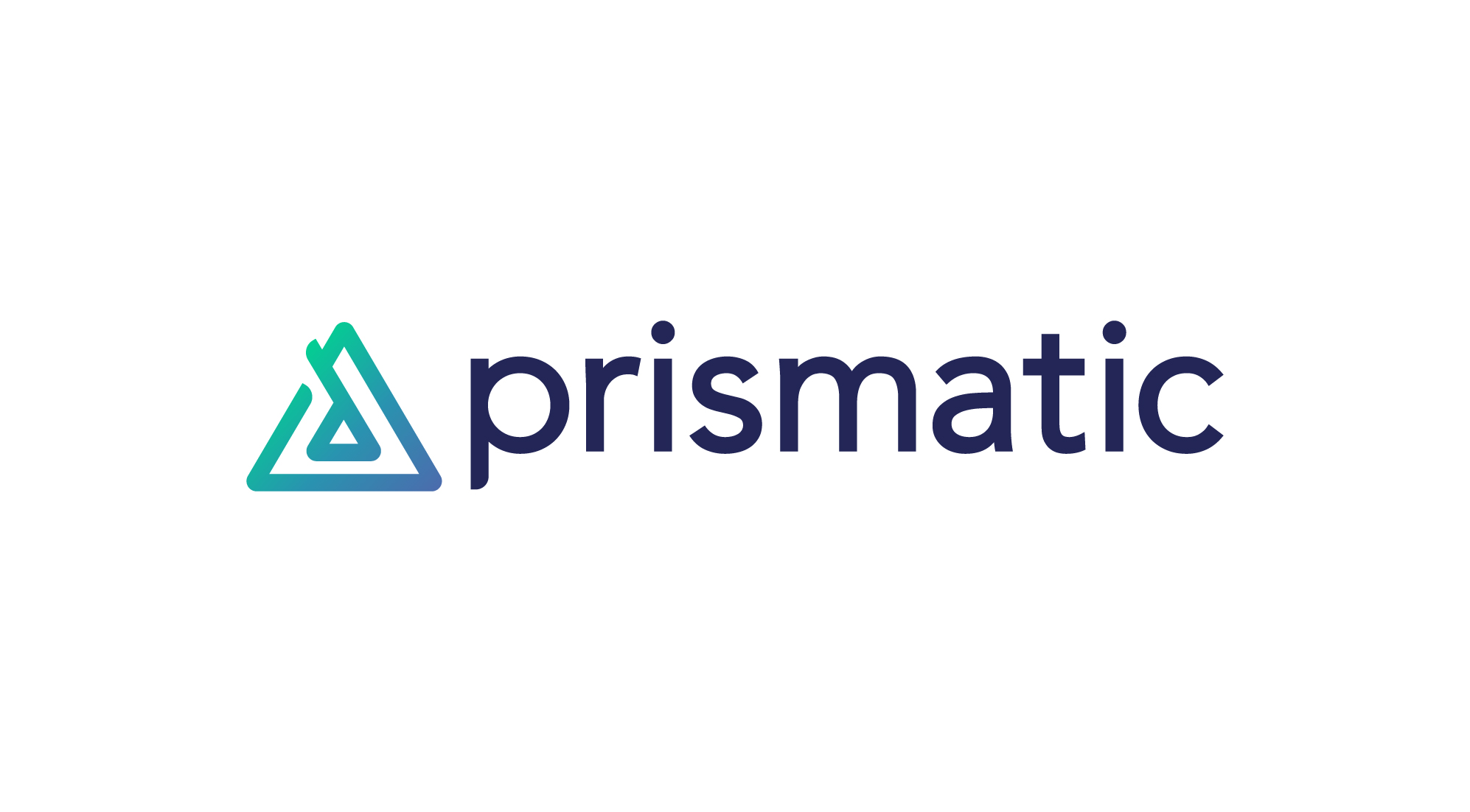Introduction
Welcome to the world of Software as a Service (SaaS), a rapidly growing industry that has revolutionized the way businesses operate and deliver their services. SaaS has gained immense popularity in recent years, offering companies a cost-effective and scalable solution for their software needs without the hassle of managing hardware and infrastructure.
But you might be wondering, just how many SaaS companies are there? With the rise of cloud computing and increased demand for remote work solutions, the SaaS market has experienced remarkable growth. In this article, we will delve into the world of SaaS companies, exploring their numbers, industry verticals, and the factors driving this exponential growth.
Before we dive into the statistics and figures, let’s first define what SaaS is. Simply put, it is a software distribution model where applications are hosted by a provider and accessed by users over the internet. This eliminates the need for users to install and maintain the software on their own devices, making it highly convenient and accessible.
The growth of the SaaS industry can be attributed to several factors. One key driver is the increasing demand for flexible and affordable software solutions. SaaS offers companies the ability to access a wide range of applications, from customer relationship management (CRM) systems to project management tools, without the need for significant upfront investments.
Another factor contributing to the rise of SaaS companies is the increasing adoption of cloud technology. Cloud computing provides the infrastructure and scalability required to power SaaS applications, making it easier for companies to deploy and manage software without the need for extensive IT teams or physical servers.
Additionally, SaaS companies have been quick to adapt to changing market dynamics. They have embraced mobile technology, enabling users to access their applications on smartphones and tablets. This has further fueled the demand for SaaS solutions, as employees can now work from anywhere, at any time, increasing productivity and efficiency.
However, along with the opportunities, SaaS companies also face unique challenges. They must be able to provide secure and reliable applications, ensuring the privacy and data protection of their users. Additionally, as the market becomes increasingly saturated, competition among SaaS providers has intensified, requiring companies to differentiate themselves through innovative features and exceptional customer support.
SaaS solutions have found their way into numerous industries and verticals, catering to the needs of businesses of all sizes. From healthcare and finance to education and e-commerce, SaaS applications have transformed the way these industries operate, providing them with advanced tools and insights to streamline processes and drive growth.
Definition of SaaS
Before we delve deeper into the world of SaaS companies, let’s start by understanding what Software as a Service (SaaS) really means. SaaS is a software distribution model in which applications are hosted by a provider and made available to users over the internet.
Traditionally, companies and individuals would purchase software licenses and install the applications directly on their computers or servers. This often required significant upfront costs, ongoing maintenance, and updates. With the advent of SaaS, these limitations have been overcome, offering a more flexible and cost-effective solution.
In the SaaS model, the software is centrally hosted by the provider, who takes care of all the technical aspects, including infrastructure, security, and maintenance. Users can access the application through a web browser, eliminating the need for installation or setup on individual devices. This cloud-based approach allows for seamless collaboration and easy upgrades, as updates are pushed to all users simultaneously.
One of the key advantages of SaaS is its subscription-based pricing model. Instead of paying large upfront costs for software licenses, users pay a monthly or annual fee to access the application. This pay-as-you-go model allows businesses to scale their software usage as their needs evolve, making it a highly cost-effective solution.
SaaS applications are typically multi-tenant, meaning that multiple users can access the same application while their data remains securely separated. This allows for efficient resource utilization and enables providers to offer their services at a lower cost compared to individually installed software.
Furthermore, SaaS offers a high level of accessibility and flexibility. Since the applications are accessed over the internet, users can work from anywhere, on any device with an internet connection. This has become increasingly important in today’s remote work environment, enabling teams to collaborate seamlessly and stay productive regardless of their physical location.
Today, SaaS encompasses a wide range of software solutions across various industries and sectors. From project management and customer relationship management (CRM) to human resources and accounting, SaaS applications have transformed the way businesses operate, allowing them to focus on their core competencies rather than managing complex software infrastructure.
As the SaaS industry continues to grow at an unprecedented rate, it is important for businesses to understand the benefits and potential drawbacks of adopting these solutions. By leveraging the power of SaaS, companies can access cutting-edge software, increase operational efficiency, and stay ahead in today’s highly competitive market.
Growth of the SaaS Industry
The SaaS industry has experienced remarkable growth in recent years, driven by the increasing demand for scalable and cost-effective software solutions. Companies of all sizes, from startups to large enterprises, are embracing SaaS to streamline their operations and enhance productivity. Let’s take a closer look at the factors contributing to the growth of the SaaS industry.
One of the major drivers of SaaS industry growth is the shift towards cloud computing. Cloud technology provides the infrastructure and scalability necessary for SaaS applications to thrive. Instead of relying on locally installed software, businesses can now access a vast array of applications through the internet, eliminating the need for extensive hardware investments and maintenance. The scalability of cloud-based solutions also allows businesses to quickly adapt to changing needs and scale their software usage as required.
Another key factor behind the growth of the SaaS industry is the rising trend of remote work. With advancements in technology and the widespread availability of high-speed internet, employees can now work from anywhere in the world. This has led to an increased demand for cloud-based software that enables seamless collaboration and access to critical business applications from any location. SaaS solutions provide the flexibility and accessibility required for remote teams to stay connected and productive.
The cost-effectiveness of SaaS solutions has also contributed to the industry’s growth. Traditional software licensing models often required significant upfront investments, along with ongoing maintenance and upgrade costs. On the other hand, SaaS operates on a subscription-based model, enabling businesses to pay only for the software they actually use. This shift from a capital expenditure (CapEx) model to an operational expenditure (OpEx) model allows companies to allocate their resources more efficiently, particularly for startups and small businesses with limited budgets.
Furthermore, the SaaS industry has witnessed a proliferation of startups and small businesses offering niche software solutions. These innovative companies are challenging traditional software vendors by providing specialized, industry-specific applications. This has created a vibrant ecosystem of SaaS providers, catering to the diverse needs of businesses across various sectors.
The COVID-19 pandemic has also accelerated the growth of the SaaS industry. The sudden shift to remote work during the global lockdowns highlighted the importance of cloud-based software for business continuity. As companies struggled to adapt to the new normal, SaaS solutions emerged as a lifeline, enabling organizations to stay connected, collaborate remotely, and maintain their operations despite the physical limitations.
The SaaS industry shows no signs of slowing down. According to a report by Market Research Future, the global SaaS market is expected to grow at a compound annual growth rate (CAGR) of 21.2% between 2020 and 2026. This growth is fueled by factors such as the increasing adoption of cloud technology, the rise of remote work, and the continuous innovation happening within the industry.
As businesses continue to embrace digital transformation, the SaaS industry will play a crucial role in providing the software infrastructure needed to support their operations. With its scalability, flexibility, and cost-effectiveness, SaaS is set to reshape the way companies access and utilize software, paving the way for a more connected and efficient future.
Key Statistics and Figures
The growth of the SaaS industry can be better understood by examining some key statistics and figures that highlight its impact on businesses and the economy. Let’s take a look at some of the most significant numbers in the world of SaaS.
- Market Size: The global SaaS market was valued at $158.2 billion in 2019 and is projected to reach $307.3 billion by 2026, growing at a CAGR of 10.4%.
- Revenue Growth: SaaS companies have witnessed exponential revenue growth over the years. In 2020, SaaS revenue reached $157 billion, representing a 9.7% increase from the previous year.
- Adoption Rate: The adoption of SaaS solutions is increasing across various industries. In a survey conducted by BetterCloud, 73% of organizations reported that more than 80% of their applications will be SaaS-based by 2022.
- Customer Retention: SaaS companies focus on customer retention as it is crucial for their long-term success. The average customer retention rate in the SaaS industry is approximately 90%, illustrating the value and satisfaction that customers derive from these solutions.
- Subscription Model: The subscription-based pricing model is highly prevalent in the SaaS industry. In a survey conducted by Blissfully, 92% of SaaS applications employed some form of subscription pricing.
- Multi-Tenancy: Multi-tenancy is a significant characteristic of SaaS applications. According to a study by Gartner, over 95% of SaaS vendors utilize a multi-tenant architecture, enabling efficient resource utilization and cost savings.
- Global Reach: SaaS solutions have a global presence, with companies serving customers across borders. The top three regions contributing to the SaaS market revenue are North America, Europe, and the Asia-Pacific region.
- Employment Opportunities: The growth of the SaaS industry has created numerous job opportunities. As of 2020, the SaaS sector employed over 2 million people worldwide, with job roles ranging from software developers to customer success managers.
These statistics and figures point towards the significant impact and potential of the SaaS industry. The market size, revenue growth, and adoption rates showcase the increasing demand for SaaS solutions among businesses of all sizes. The subscription-based model and multi-tenancy approach highlight the cost-effectiveness and scalability of SaaS applications.
Furthermore, the global reach of SaaS companies indicates the widespread adoption of cloud-based software solutions across different regions. The employment opportunities created by the industry reflect the growing need for skilled professionals with expertise in SaaS technologies and operations.
As we move forward, these key statistics and figures demonstrate the immense growth potential and opportunities within the SaaS industry. With the continuous evolution of technology and the increasing demand for digital solutions, SaaS companies are reshaping the way businesses operate, collaborate, and succeed in today’s dynamic marketplace.
Factors Driving the Increase in SaaS Companies
The rapid growth of SaaS companies can be attributed to several key factors that have driven the increase in their numbers. These factors have created a conducive environment for SaaS innovation and adoption among businesses. Let’s explore the main drivers behind the rise of SaaS companies and their success.
- Cost-effectiveness: One of the primary drivers of SaaS adoption is the cost-effectiveness it offers. SaaS eliminates the need for upfront hardware and software investments, allowing businesses to access feature-rich applications at affordable subscription-based prices. This has made SaaS an attractive option, especially for small and medium-sized enterprises (SMEs) with limited budgets.
- Scalability and Flexibility: SaaS solutions provide businesses with the scalability and flexibility needed to adapt to changing needs. Companies can easily add or remove users, upgrade or downgrade their subscription plans, and access new features without experiencing any significant interruption. This agility enables businesses to scale their operations quickly and stay competitive in a dynamic marketplace.
- Innovation and Customization: SaaS companies are known for their constant innovation and ability to deliver cutting-edge solutions. With a dedicated team of developers and engineers, SaaS providers continually update their applications, enhance functionality, and incorporate customer feedback. This focus on innovation allows businesses to leverage the latest technology and stay ahead of the curve.
- Remote Work and Collaboration: The rise of remote work and the need for seamless collaboration have accelerated the adoption of SaaS solutions. SaaS enables employees to access business-critical applications from any location with an internet connection, fostering collaboration and productivity. With the increasing prevalence of remote workforces, SaaS companies play a crucial role in facilitating efficient workflows and communication.
- Cloud Computing: The advancements in cloud computing technology have significantly contributed to the increase in SaaS companies. The availability of robust and scalable cloud platforms allows SaaS providers to deliver their applications reliably and securely. Cloud computing also offers cost efficiencies, as SaaS companies can leverage the infrastructure of cloud service providers without the need for substantial investments in physical servers and data centers.
- Enhanced User Experience: SaaS companies prioritize user experience and customer satisfaction. They invest in intuitive user interfaces, personalized dashboards, and responsive customer support to ensure a seamless experience for their users. By delivering user-friendly applications, SaaS companies can attract and retain customers in a highly competitive market.
- Global Market Reach: SaaS companies have the ability to reach a global customer base. The internet has dissolved geographical boundaries, allowing SaaS providers to serve customers across different regions without the need for physical presence. With localized language options and compliance with international regulations, SaaS companies can cater to a diverse range of customers.
These factors have contributed to the exponential increase in SaaS companies worldwide. The cost-effectiveness, scalability, and customization of SaaS solutions make them highly attractive to businesses looking to streamline operations and optimize productivity. The innovative nature of SaaS companies, coupled with the seamless collaboration enabled by their solutions, has garnered widespread adoption.
As cloud computing technology continues to advance and remote work becomes the norm, the demand for SaaS solutions is expected to grow further. SaaS companies are well-positioned to continue driving innovation, offering businesses the tools they need to thrive in a digital-first world.
Challenges Faced by SaaS Companies
While the SaaS industry presents numerous growth opportunities, SaaS companies also face challenges that they must navigate to achieve success. Understanding and addressing these challenges is crucial for SaaS providers to deliver value to their customers and remain competitive. Let’s explore some of the key challenges faced by SaaS companies.
- Data Security and Privacy: SaaS companies handle vast amounts of customer data, ranging from sensitive business information to personal user data. Ensuring the security and privacy of this data is a top priority and a significant challenge. SaaS providers must implement robust security measures, such as encryption and access controls, and comply with data protection regulations to build trust with their customers.
- Reliability and Downtime: As SaaS applications are hosted in the cloud, any disruptions in the underlying infrastructure can lead to service outages and downtime. SaaS companies must invest in high-availability infrastructures and implement backup and disaster recovery plans to minimize downtime and ensure reliable access to their applications.
- Competition and Differentiation: The SaaS market is highly competitive, with numerous companies vying for the attention of potential customers. SaaS providers must differentiate themselves from competitors by offering unique features, exceptional customer support, and a strong value proposition. Building a strong brand and fostering customer loyalty are crucial for long-term success.
- Integration Challenges: Many businesses rely on a multitude of software applications to manage different aspects of their operations. For SaaS companies, ensuring seamless integration with other software systems and platforms is essential. Compatibility issues and complex integration processes can pose challenges and impact the adoption of SaaS solutions.
- Customer Education and Onboarding: SaaS applications often come with a learning curve, and customers need to be educated about the features and functionality of the software. SaaS companies must provide comprehensive customer support, training resources, and intuitive user interfaces to facilitate the onboarding process and ensure a smooth transition for new customers.
- Ever-Evolving Regulatory Landscape: The SaaS industry operates in a constantly evolving regulatory environment. SaaS providers must stay up to date with data protection laws, compliance requirements, and industry regulations across different regions. Failing to comply with these regulations can result in legal and reputational consequences.
- Customer Churn and Retention: SaaS companies rely heavily on customer retention for sustainable growth. High customer churn rates can impact revenue and hinder profitability. SaaS providers must actively monitor customer satisfaction, address concerns promptly, and continuously deliver value to retain their customers for the long term.
Addressing these challenges requires a proactive and customer-centric approach from SaaS companies. By prioritizing data security, reliability, differentiation, and integration, SaaS providers can build trust with customers and stay ahead of the competition. Ongoing customer education, seamless onboarding experiences, and compliance with regulations are also essential for success in the dynamic SaaS landscape.
Successfully navigating these challenges is crucial for the growth and sustainability of SaaS companies. By understanding the obstacles they face and implementing effective strategies to overcome them, SaaS providers can continue to innovate, provide value to their customers, and thrive in a competitive market.
Industries and Verticals Served by SaaS
SaaS solutions have found their way into various industries and verticals, transforming the way businesses operate and cater to their customers. From healthcare to finance, education to e-commerce, SaaS has become a game-changer across numerous sectors. Let’s explore some of the industries and verticals that have benefited from SaaS applications.
- Healthcare: The healthcare industry has embraced SaaS solutions to enhance patient care, streamline operations, and comply with regulatory requirements. SaaS applications in healthcare facilitate electronic health records (EHR) management, telehealth services, practice management, and patient engagement, enabling healthcare providers to deliver efficient and personalized care.
- Finance and Accounting: SaaS has revolutionized the finance and accounting sector by simplifying complex financial tasks, such as bookkeeping, invoicing, and financial reporting. SaaS accounting software automates processes, improves accuracy, and provides real-time insights, empowering businesses to make informed financial decisions.
- E-commerce: SaaS applications have had a significant impact on the e-commerce industry. From inventory management and order fulfillment to customer relationship management (CRM) and marketing automation, SaaS solutions help online retailers streamline their operations, drive sales, and deliver exceptional customer experiences.
- Education: The education sector has adopted SaaS solutions to enhance teaching and learning experiences. SaaS applications in education include learning management systems (LMS), student information systems (SIS), and classroom collaboration tools. These solutions enable remote learning, personalized instruction, and efficient administration, revolutionizing education delivery.
- Human Resources: SaaS has transformed the way businesses manage their human resources processes. SaaS HR solutions streamline recruitment, onboarding, performance management, and employee engagement, allowing HR teams to focus on strategic initiatives and provide a seamless employee experience.
- Marketing and Sales: SaaS has revolutionized marketing and sales processes, enabling businesses to automate marketing campaigns, manage customer relationships, and analyze data for targeted marketing efforts. SaaS marketing automation and CRM platforms have become essential for businesses seeking to optimize their sales and marketing efforts.
- Manufacturing and Supply Chain: SaaS applications have improved the efficiency and visibility of manufacturing and supply chain operations. With solutions for demand forecasting, inventory management, and supply chain optimization, SaaS enables manufacturers to streamline their processes, reduce costs, and improve supply chain synchronization.
- Real Estate: SaaS solutions have digitized key processes in the real estate industry, including property management, listing management, and tenant communication. SaaS allows real estate professionals to efficiently manage their portfolio and provide superior customer experiences.
These are just a few examples of the industries and verticals that have benefited from SaaS solutions. The scalability, affordability, and flexibility of SaaS applications have made them highly adaptable to the specific needs of businesses across different sectors. As technology continues to evolve, we can expect SaaS to continue transforming industries and opening up new opportunities for innovation.
Future Outlook for SaaS Companies
The future of SaaS companies looks promising as the demand for cloud-based software solutions continues to rise. With ongoing advancements in technology and changing market dynamics, SaaS companies find themselves at the forefront of innovation and digital transformation. Let’s explore the future outlook for SaaS companies and the trends that will shape their trajectory.
1. Continued Growth: The SaaS market is expected to grow substantially in the coming years. According to Grand View Research, the global SaaS market is projected to reach $436.9 billion by 2028, driven by the increasing adoption of cloud technology, remote work trends, and the need for scalable and cost-effective software solutions.
2. Industry-Specific Solutions: SaaS companies will continue to focus on providing industry-specific solutions. This specialization allows companies to target the unique needs of different sectors, offering tailored applications and functionality that improve efficiency, compliance, and overall business performance.
3. Artificial Intelligence and Machine Learning: AI and ML technologies will play a significant role in the future of SaaS companies. These technologies will enhance data analytics, automate processes, and provide personalized experiences for users. SaaS providers will leverage AI and ML to offer advanced features, optimize workflows, and deliver actionable insights.
4. Integration and Interoperability: SaaS applications will become increasingly interoperable, enabling seamless integration with other software systems and platforms. This integration will support end-to-end business processes, allowing organizations to leverage the power of connected applications and data to streamline operations and enhance productivity.
5. Cybersecurity and Data Privacy: As the volume and sensitivity of data stored in SaaS applications increase, SaaS companies will prioritize cybersecurity and data privacy. Robust security measures, state-of-the-art encryption, and compliance with stringent data protection regulations will be imperative to build trust with customers and mitigate the risk of data breaches.
6. Improved User Experience: SaaS companies will continue to invest in user experience to differentiate themselves in a competitive market. Intuitive interfaces, personalized dashboards, and seamless onboarding experiences will be key focus areas. Design thinking principles will shape the development of SaaS applications, maximizing usability and customer satisfaction.
7. Expansion into Emerging Markets: SaaS companies will expand their reach into emerging markets, particularly in Asia, Africa, and Latin America. The increasing adoption of digital technologies and the growth of small and medium-sized enterprises in these regions present significant opportunities for SaaS providers to tap into new customer bases and drive revenue growth.
8. Subscription Models and Pricing Flexibility: SaaS companies will continue to offer flexible pricing models to cater to the diverse needs of businesses. Subscription-based pricing will be complemented by usage-based models, freemium plans, and tiered pricing structures. This flexibility will enable businesses to choose the most suitable pricing option based on their requirements and budget.
With the ongoing digital transformation and the need for scalable and accessible software solutions, SaaS companies are poised for a bright future. By embracing technology advancements, focusing on specialization, and prioritizing customer needs, SaaS providers can capitalize on the growing demand for cloud-based applications and cement their position as enablers of business success.
Conclusion
The SaaS industry has experienced exponential growth in recent years, revolutionizing the way businesses operate and consume software. With the increasing demand for scalable, flexible, and cost-effective solutions, SaaS companies have emerged as key players in the digital landscape.
In this article, we have explored various aspects of the SaaS industry, from the definition of SaaS to the growth drivers and challenges faced by SaaS companies. We have also examined the industries and verticals that have benefited from SaaS solutions and discussed the future outlook for SaaS companies.
The future of SaaS companies looks promising, as the demand for cloud-based software solutions continues to soar. With advancements in technology, the integration of AI and ML, and a focus on cybersecurity and data privacy, SaaS companies are well-positioned to innovate and deliver value to businesses across diverse industries.
As more businesses embrace digital transformation and seek efficient and accessible software solutions, SaaS companies will play a crucial role in driving productivity, streamlining processes, and enabling collaboration. By understanding the evolving needs of customers, adapting to changing market dynamics, and staying ahead of emerging trends, SaaS companies can thrive in a highly competitive landscape.
While SaaS companies face challenges such as data security, competition, and customer churn, they have the opportunity to leverage their expertise and tailor solutions to the specific needs of different industries. By providing industry-specific applications, seamless integration with other software systems, and exceptional user experiences, SaaS companies can differentiate themselves and build long-term relationships with their customers.
In conclusion, the SaaS industry will continue to shape and transform the way businesses operate. With the potential to drive efficiencies, empower remote workforces, and enable digital innovation, SaaS companies have a bright future ahead as key drivers of the digital economy.

























